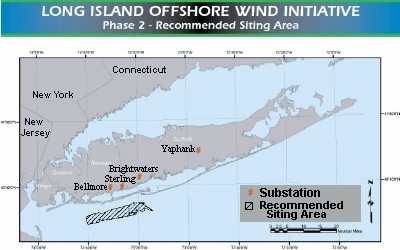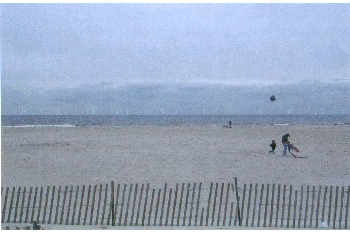
An Electronic Newsletter
of EEA's Environmental Consulting Activities
Spring 2003
EEA, Inc.
55 Hilton Avenue
Garden City, New York
(516) 746-4400
(212) 227-3200
(800) 459-5533
with additional New York offices in:
Stony Brook
(631) 751-4600
Altamont
(518) 861-8586
e-mail addresses:
General:
mailto:eea@eeaconsultants.com
Individual:
First initial and last name
@eeaconsultants.com
EEA services include
Phase I ESAs, Haz-Mat
Testing and Remediation, Wetlands
Delineation
and Creation, Natural
Resources Inventories,
Marine Ecology Studies,
Air Quality and Noise
studies, and Environmental Management
System (ISO 14000) implementation.
Visit our web site at
http://www.eeaconsultants.com/
For information or
quotes contact:
Phase I ESAs
Richard
Fasciani
Phase II/III Haz-Mat
Testing and Remediation
Nicholas
Recchia, CPG
Dredge Management Testing
Jeffrey Shelkey
EAS/EIS Studies
Janet Collura
Wetlands Studies and
Design
Laura Schwanof,
RLA
Marine Ecology
Teresa Rotunno
Terrestrial Ecology
Denise Harrington
Air Quality and Noise
Victor Fahrer,
P.E.
Environmental Management Systems
(ISO 14000)
Robert
Clifford
EEA, Inc. -
founded in 1979
Principals
Leland M.
Hairr, Ph.D.
President
Allen Serper,
M.S., P.E.
Vice President
Roy R. Stoecker,
Ph.D.
Vice President
|
 |


Winds
of Change Blow Across Long Island
With the approach of spring, Long Island residents are breaking
out of their winter hibernation and spending more time outside enjoying the
fresh air and ocean breezes. Our spectacular sea breeze, however, holds more
promise than just igniting spring fever. In the future it may supply a large
portion of Long Island’s electricity. Governor Pataki wishes to develop an
energy plan for New York that calls for 25% of all electricity used to be
produced through the use of renewable energy sources by 2013. One form of
renewable energy, wind, is prevalent on Long Island, one of New York’s most
heavily populated, and therefore, energy demanding areas. The land resources
for building electric generating turbines are limited, however, and focus has
now moved offshore. Winds along the south shore of Long Island are strong and
would be able to support offshore turbines that could produce electricity for
the island.
|

|
|
Wind energy is clean and best of all,
inexhaustible. As the wind blows, it turns the blades of the
turbines, which cause a power train to produce a current. This
current is carried by underwater cables to an offshore
substation and then brought to land through another cable that
is connected to the existing power grid on land. And all of
this is done without burning fossil fuels.
Offshore wind energy is popular in Europe, but
no offshore wind farms have been constructed in the United
States or North America yet. This project would be one of the
first, if not the first, in the United States (another project
is planned for Nantucket Sound). Several scientific studies of
offshore European wind farms are being conducted, but as of
yet, there are very few negative environmental impacts. Bird
strikes are low and the bases of turbines actually attract
marine life. Studies have shown that invertebrates colonize
the bases of turbines, in turn attracting fish. These
artificial reef systems can act as nursing grounds for fish
and invertebrates and are popular areas for fishermen who use
fixed gear types (pots and traps).
The Long Island Power Authority (LIPA) has
taken a large step in the direction of renewable energy with
the proposal of an offshore wind farm and has recently
released a request for proposals for a developer to build one
along the south shore of Long Island. The wind farm would
consist of 25 – 50 turbines that could produce 100 - 140
megawatts of power for the island. Turbines would be located
in the Atlantic Ocean, approximately three miles from shore,
and in approximately fifty feet of water.
EEA, along with other environmental
consultants, has conducted a preliminary study of the entire
south shore to locate possible sites for an offshore wind
farm. EEA wrote a section of a desktop study that describes
the natural resources on the south shore of Long Island and
addresses sensitive issues involved in the building of an
offshore wind farm. Possible locations were analyzed using
physical, geological, biological, socio-economic, and
archaeological data, and after careful consideration, the most
practical location for the offshore wind farm was south of
Jones Island. This location has wind speeds necessary to turn
the turbines, water shallow enough to accommodate the
construction of turbines, does not have rare archaeological
artifacts or marine species, and is farther west of some of
the more heavily used commercial fishing grounds.
|

|
|
|
Jones Beach Simulation of an
Offshore Wind Energy Farm |
|
However, one of the most sensitive issues in
offshore construction is the loss of trawling grounds for
commercial fishermen. Commercial fishermen say that they trawl
the waters off Jones Island and the construction of turbines
would displace their fishing operations. EEA is now working
with the Montauk Fishermen’s Association to try to work
through this issue and alleviate some of their concerns.
LIPA plans to have the entire operation up and
running in 2007. This offshore wind initiative has the support
of several public interest and environmental groups including:
the Citizens’ Advisory Panel, Sustainable Energy Alliance,
Long Island Neighborhood Network, NRDC, and Campaign for the
Environment, to name a few. LIPA has also retained the
services of consultants and counsel including: AWS Scientific,
AEG Inc., EEA Inc., Navigant Consulting Inc., and EnviroLaw to
lead it through the legal, permitting, and environmental
aspects of the initiative. The offshore wind initiative is an
exciting step for Long Island and EEA is glad to be part of
this environmentally beneficial project.
|
|
|
|



